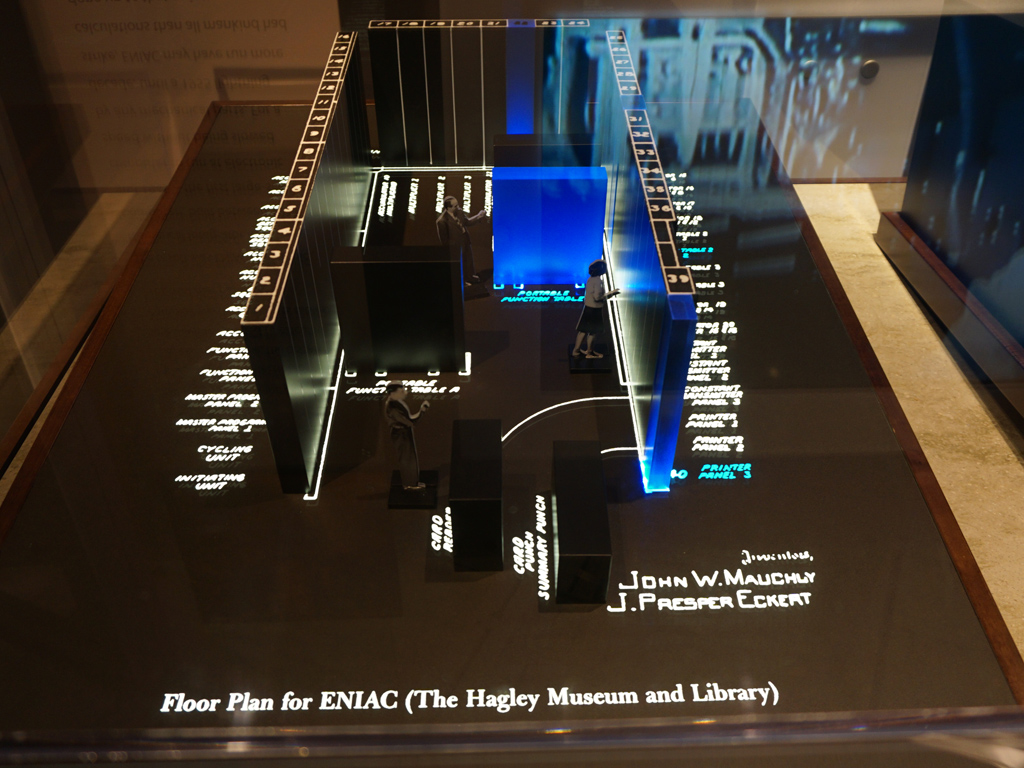Computer History: From The Antikythera Mechanism To The Modern Era
In this article, we shed light on the most important moments in computer history, acknowledging the people that have contributed to this evolution.
ENIAC And EDVAC Computers
ENIAC (Electronic Numerical Integrator And Computer) is considered the first general purpose computer. It was created by Physics Professor John William Mauchly and his graduate student John Presper Eckert Jr. The construction of the ENIAC lasted three years (from 1943 to 1946) and took place at the Moore School of Electronics Technology, part of the University of Pennsylvania.


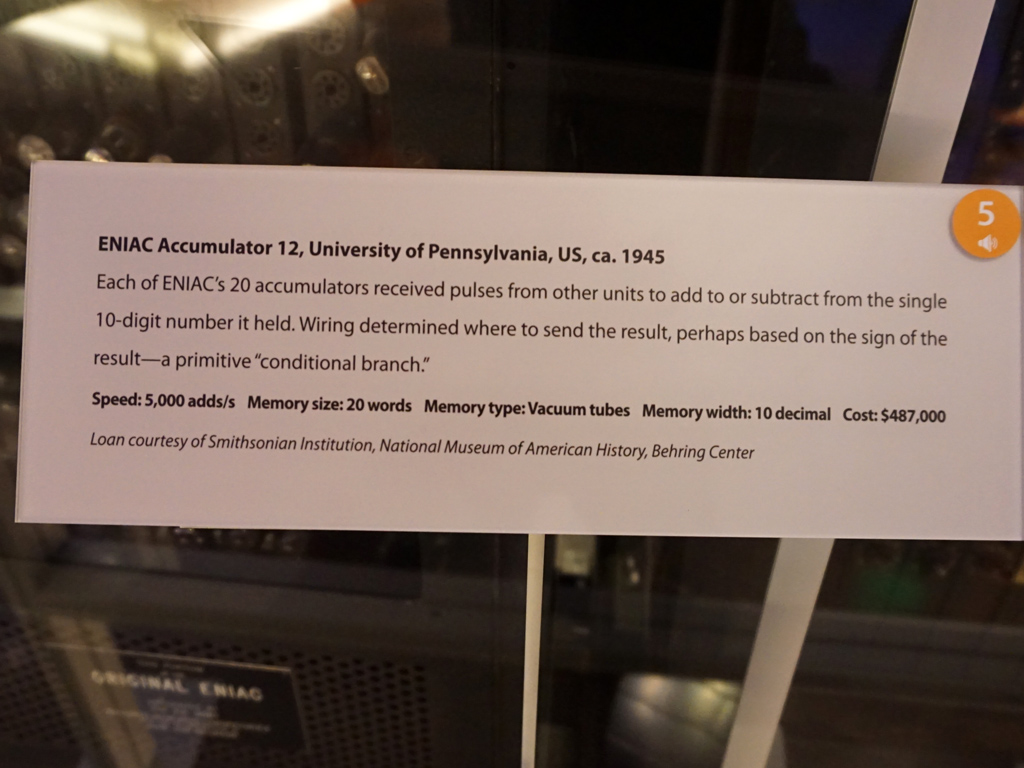
The ENIAC computer was huge. It was nearly 10 feet high (3 meters), occupied over 300 square feet (93 square meters) and weighted about 30 tons, which means it had almost the same weight as a tank! For its construction, 18,000 vacuum tubes were used along with 10,000 capacitors, 70,000 resistors and 6,000 switches. The power consumption of this beast was 150 kW! There was an urban legend that lights in Philadelphia dimmed whenever ENIAC was powered on, however this wasn't true.
ENIAC's biggest flaw was its reliability, because the tubes that it used broke down often, taking down the whole system, and as you can imagine, it was pretty hard to find the defective tube(s) among the 18,000 that the ENIAC used. Performance was pretty good for the standards of this era. ENIAC could perform 5,000 additions and subtractions or 30 multiplications per second, while its memory could store twenty 10-digit numbers.
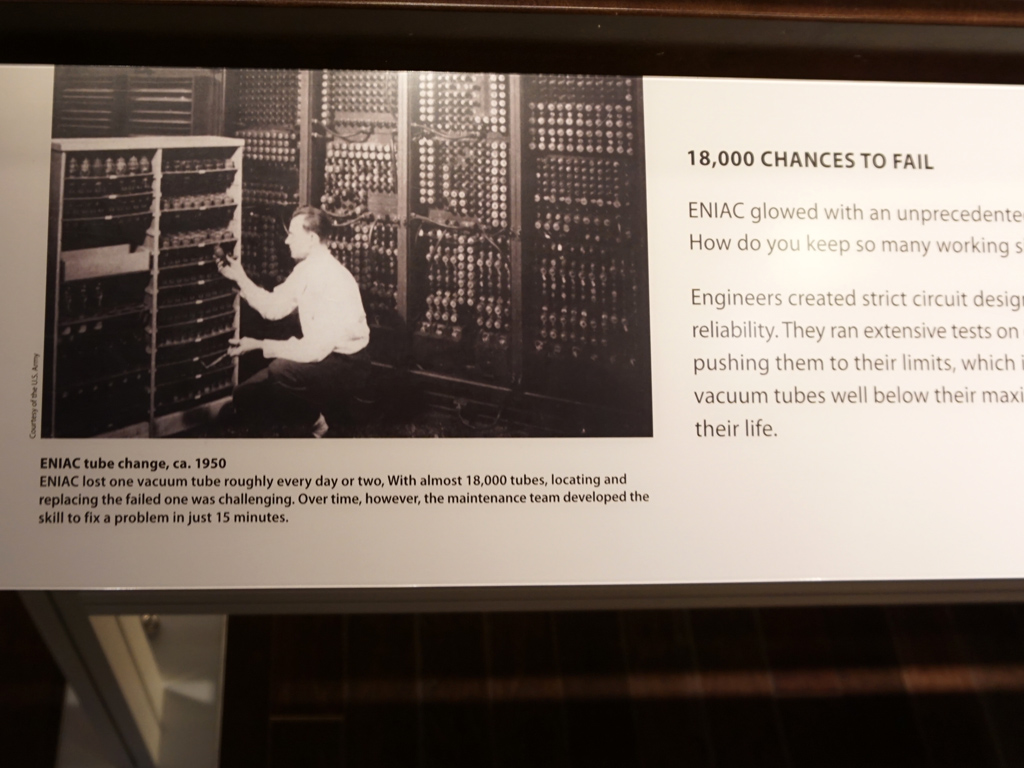
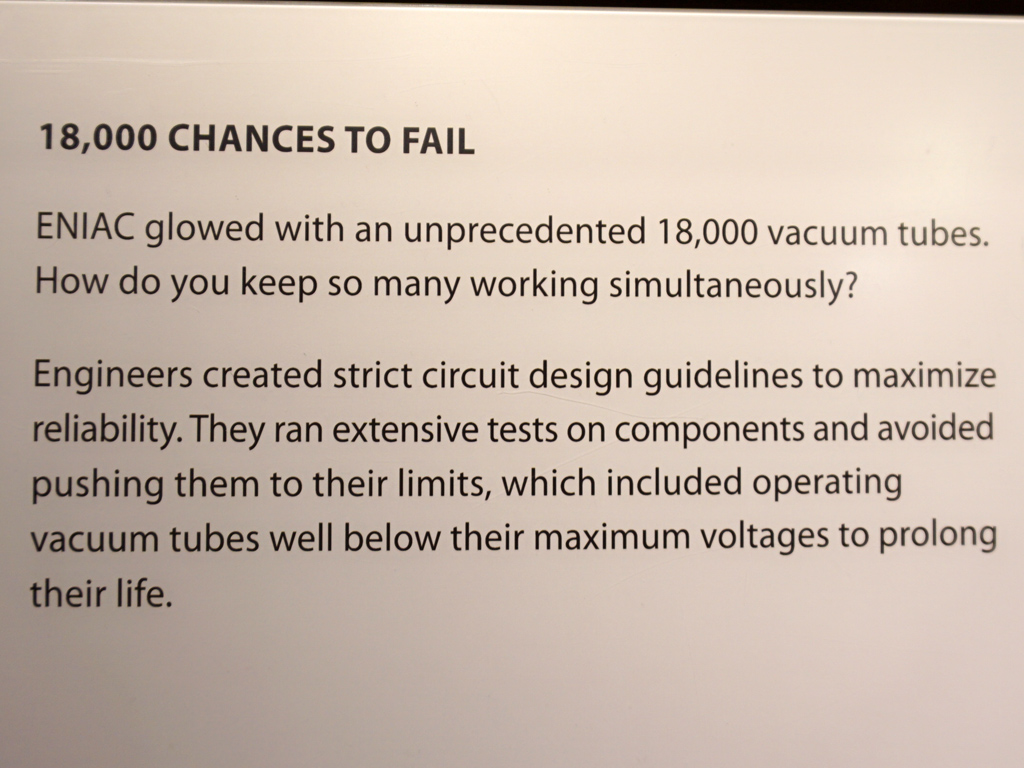
Besides its reliability issues, ENIAC had another major problem: it was very difficult to program. Contrary to today's computers, programming the ENIAC or modifying an existing program required making hundreds of wire changes. The programming procedure could last for several days, while ENIAC usually needed just a few minutes to solve the assigned problem.
It's interesting to note that the term "hacker" originated from the early computing days of the ENIAC. Back then, when a skilled programmer managed to significantly reduce the time needed to program a computer, meaning fewer wire connections to solve the given problem, it was said that he did a hack and was thus called a hacker. However, some argue about the origin of the term and state that its use started several years after the ENIAC during the 1960s.
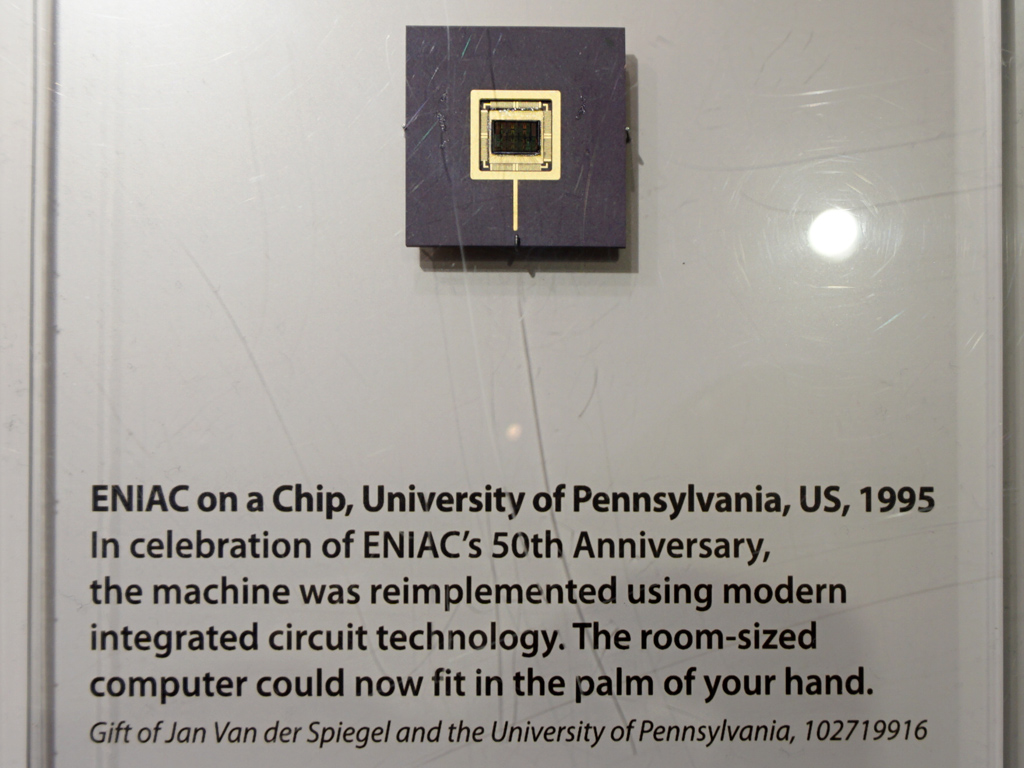
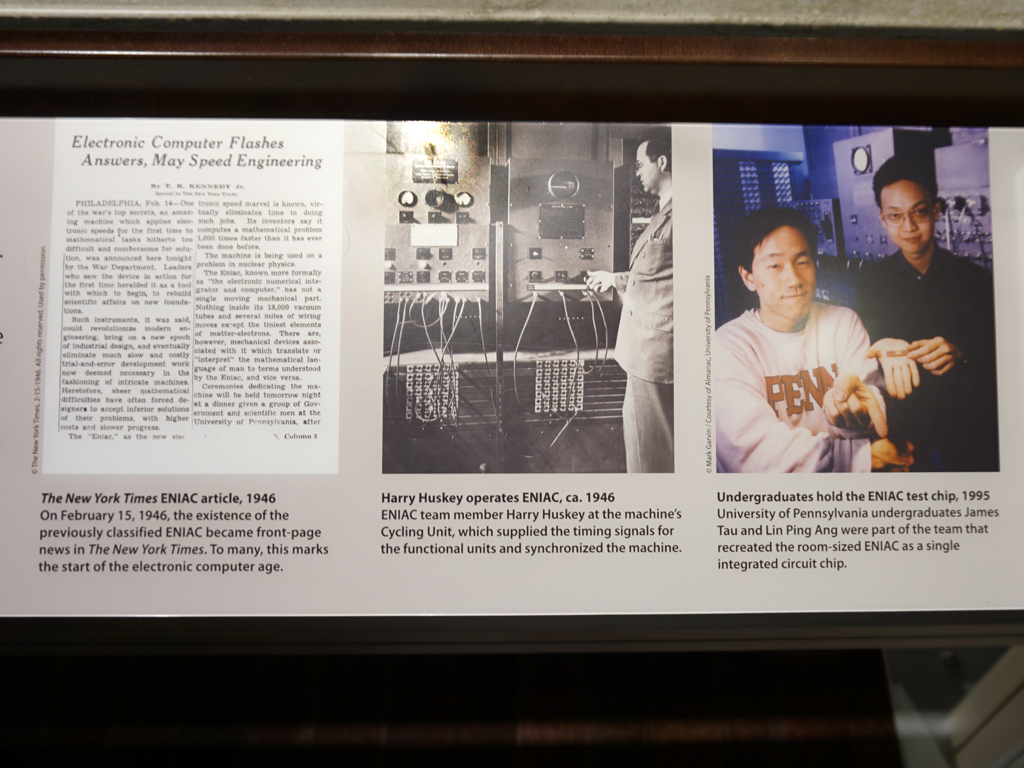
In 1995, 50 years after the creation of ENIAC, a team from the University of Pennsylvania shrunk this gigantic computer into a single chip. A truck load of vacuum tubes and numerous other electronic components that needed a small power factory for their operation could now fit in the palm of your hand by utilizing integrated circuit technology, a huge technology advance.
EDVAC
The makers of ENIAC were aware of its significant drawbacks, so during its manufacturing process they had already begun to design a new and improved computer that would be named EDVAC (Electronic Discrete Variable Automatic Computer). The major upgrade in EDVAC was the fact that it had memory that allowed the storage of the execution code (program). EDVAC's memory was provided through the use of mercury delay lines, and the binary system was used instead of the decimal system, which simplified its construction.
Get Tom's Hardware's best news and in-depth reviews, straight to your inbox.
The integration of memory in computers for storing the execution programs was further developed by Johann (John) von Neumann in an article that he published, which became known as the "First Draft." The structure of a computer described in this article is still followed by today's computers.
EDVAC's design process started in 1944 and it was delivered in 1949 to the Ballistics Research Laboratory. However, due to some problems it didn't began its operation until two years later. EDVAC was notably faster than ENIAC and it consumed 56kW of power, around one third of that used by ENIAC! In general, it was a reliable computer that was kept in service until 1961.
MORE: How To Choose A Monitor
MORE: All Monitor Content
Current page: ENIAC And EDVAC Computers
Prev Page The First Bug In Computer History Next Page UNIVersal Automatic Computer I - UNIVAC I
Aris Mpitziopoulos is a contributing editor at Tom's Hardware, covering PSUs.
